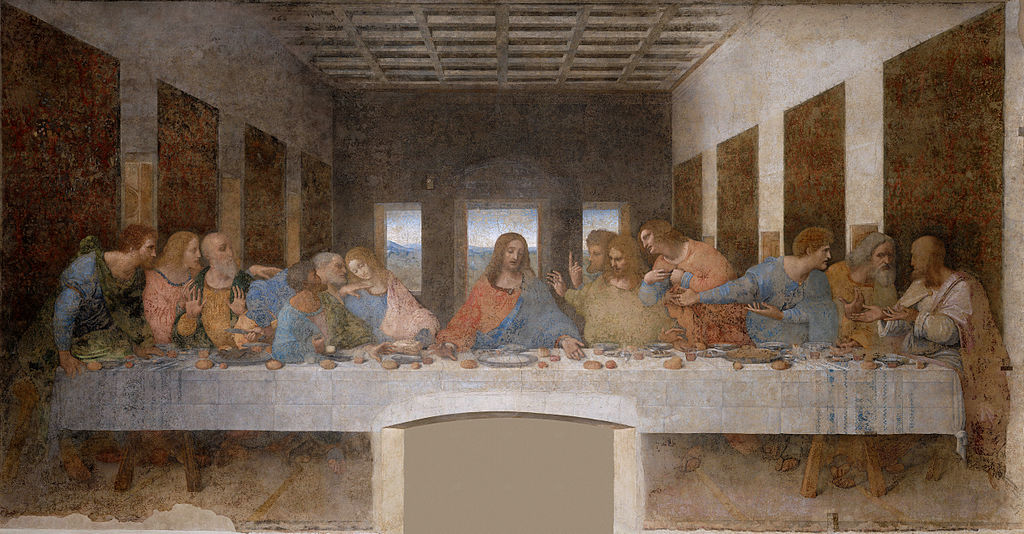
The other Leonardo
This isn’t about the one who won the Oscar, talented thought he may be. This one is Leonardo Da Vinci, the painter ( and much more besides ), who lived during the Italian Renaissance. His dates are 1452 – 1519. Almost the first thing to say about him is, even if you don’t think you know much about him, you will almost certainly have come across the Mona Lisa. This is possibly the most famous painting in the world. It’s in the Louvre in Paris and has many theories attached to it, such as who she is, how many people are actually painted on that canvas, and the most famous question of all: is she actually smiling? You might also have seen The Last Supper (pictured above), Da Vinci’s famous painting of Christ and his apostles at their last meal together.
But Leonardo wasn’t just a painter. He was a true child of the Renaissance and just now the Science Museum in London is putting on an exhibition of his scientific, educational and engineering achievements. In all, they are displaying twenty nine of his models. He prepared designs for catapults and other war machines, and had futuristic ideas such as bicycles and contraptions that should fly. The nature of the Renaissance, of course, was that it was the ‘rebirth’ of many classical studies. Aristotle had pioneered the process of scientific observation, watching sea animals on the islands of Greece; now Leonardo also inherited a sense of the value of mathematical calculations for his designs of pulleys, levers and gears. His work didn’t end there, either. In fact, you would need several museums and galleries to show all his work. He was also a great anatomist, and many of his greatest works are studies of the way the human body works. The Royal Collection behind Buckingham Palace recently held an exhibition of his studies of human anatomy.
So where did all this achievement come from? The Italy of Da Vinci’s time was a place full of engineering. Its agriculture depended on reliable gears, levers and screws, since the country was short of energy sources. Further, its medieval craft traditions had maintained many skills, including those in engineering and industry – the idea was then that nature could be controlled by man’s ingenuity. Nor was Da Vinci alone. Art and architecture flourished. Michaelangelo was painting the Sistine Chapel at this time. But is Leonardo’s work as good as all that? See for yourself. The Da Vinci ‘cartoon’, a pencil drawing by him, is at the National Gallery. It’s well worth a visit or a search online.
The world is a fascinating place – which makes Leonardo Da Vinci well worth learning about!
